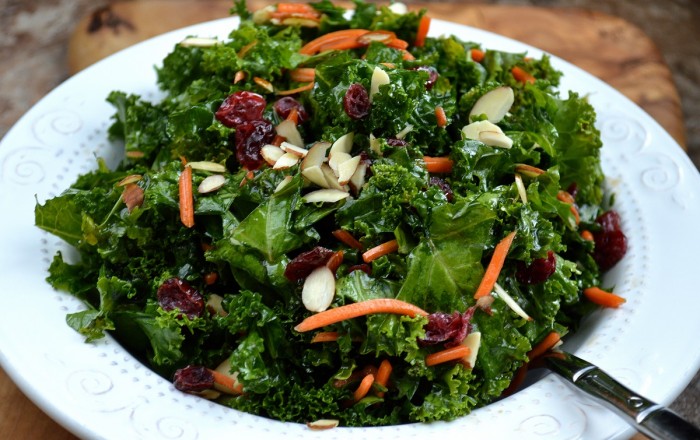Health Benefits:
Kale is a cruciferous vegetable with powerful antioxidants, like other leafy greens. It is an excellent source of iron, vitamin K and aids in digestive health. Adding fruits, seeds and nuts to this salad will give you an additional boost of vitamins and minerals.
Ingredients:
1 large bunch Kale (we used Lacinato)
1 beet root cooked (steamed or baked)
2 tbsp. cranberries
2 tbsp. your favorite nuts
Dressing:
1 lemon
2 tsp. Dijon mustard
1 clove garlic
3 tbsp. Olive oil
Salt and pepper to taste
Preparation:
Dressing: In a dressing bottle, add the lemon juice, mustard, the whole garlic clove slightly crushed and skin removed, salt and pepper to taste. Shake it strongly and add the olive oil, shake it again and reserve.
Remove the large stem from the center of the kale leaves. Chop the leaves in half lengthwise, and then cut into thin ribbons. Toss the kale in the bowl to coat it with dressing, set aside for 10 minutes to marinate. Before serving add the beetroot cut in small slices, the cranberries and the nuts.
Serve 6 portions.

